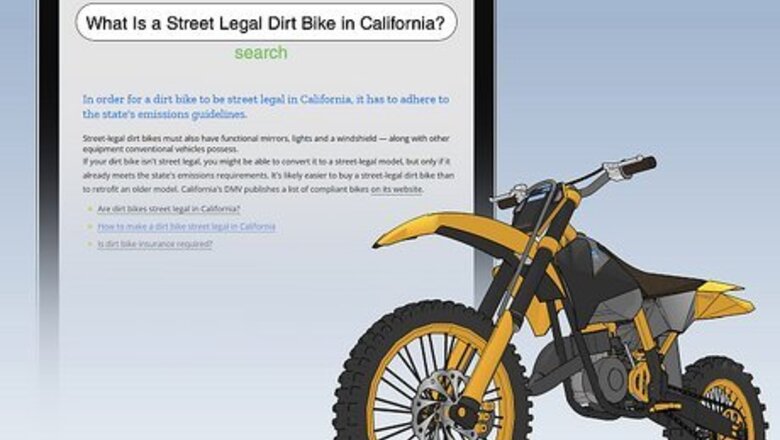
views
- Check the Department of Transportation (DOT) requirements and your state's DMV laws for street-legal bikes to find out what changes you need to make.
- All states require street-legal bikes to have DOT-compliant headlights, mirrors, tail lights, brake lights, DOT-compliant turn signals, and DOT-certified tires.
- Most states require street-legal bikes to have license plate brackets, EPA-approved mufflers, and horns. Practical modifications include a kickstand and odometer.
- Take the required paperwork to your local DMV to get approval and register your dirt bike for street use.
Can you make a dirt bike street legal?
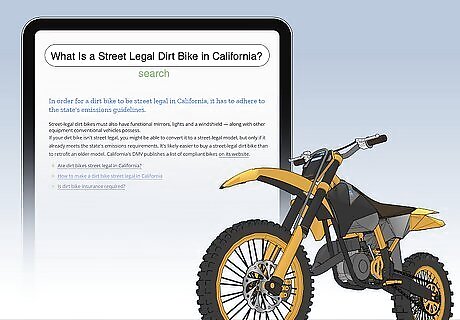
You can make a dirt bike street legal in most areas, but check state laws. Laws for converting an off-highway vehicle (OHV) for street use vary—every state has their own specific requirements, but many of the mechanical modifications are the same regardless of where you live. Start by looking up the Department of Transportation (DOT) requirements for street bikes. Then, look for additional requirements on your state’s DMV website. Look at the minimum requirements on both sites closely. Is converting your dirt bike to meet the requirements truly feasible? How much will it end up costing you (and is it worth it)? In some cases, it may be cheaper to just buy a used dirt bike that’s already street legal. Many states require you to go through the inspection and registration process to legalize a dirt bike. You may also need insurance, tags, and documentation proving your bike is compliant with all laws. Be sure to check city and community laws, too. For example, something that’s perfectly legal in rural, upstate New York may not be allowed in New York City.
Mechanical Adjustments

Headlight All states require a dirt bike to have at least one DOT-compliant headlight if you want to ride it on the street. DOT-compliant means the headlight has high and low beams. Depending on your state, the headlight may have to be linked to a switchgear on the left handlebar. LED headlights are the most power-efficient options. You’re allowed to install two headlights (some riders want better visibility), but no more than that.
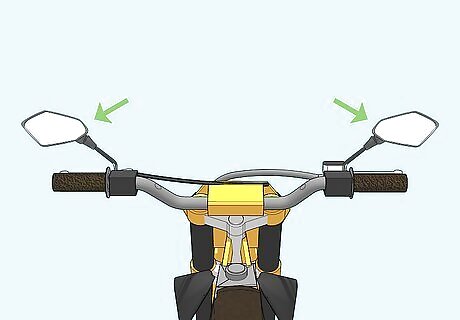
Mirrors Two mirrors attached to the handlebars make it possible to see everything around you at all times. Your state might let you get away with one mirror, but most states require two (and more visibility is always better). Look for a clear pair of mirrors with no distortion and attached clamps. If the mirrors don't come with clamps, you can buy a set of universal clamps to mount the mirrors on your handlebars.
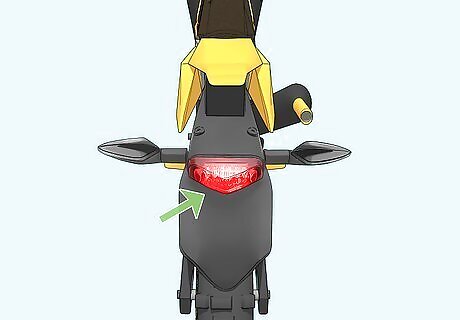
Tail light and brake light Along with the headlight, your bike also needs a tail light so you’ll be visible to vehicles behind you (especially at night). You also need a functioning brake light to indicate when you're slowing down and stopping. LED units are your best bet since they require the least amount of power. In some states, the tail light must be connected to your bike's battery. To install a brake light, use a manual or hydraulic switch attached to the rear brake master cylinder.

Turn signals Turn signals aren’t required in all states, but it's still a good idea to install them, especially if you plan to ride your bike at night. If your state doesn’t require them, you’ll have to use old-fashioned hand signals (not exactly ideal when you’re steering your bike). If you decide to install them, be sure to go with DOT-compliant turn signals. LED turn signals are the best option since they require the least amount of power.
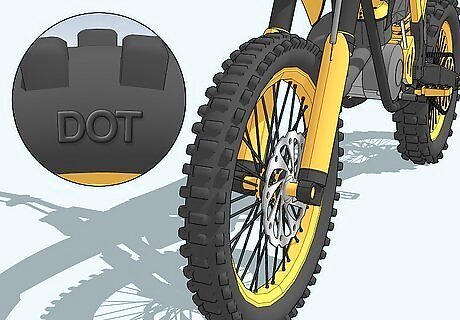
DOT-certified tires Any vehicle that travels on public streets must have tires that adhere to strict DOT requirements. Look for dirt bike tires that have the DOT seal of approval on the sidewall. High-quality tires are recommended for your safety, but as long as they have the DOT seal, you’ll pass inspection.
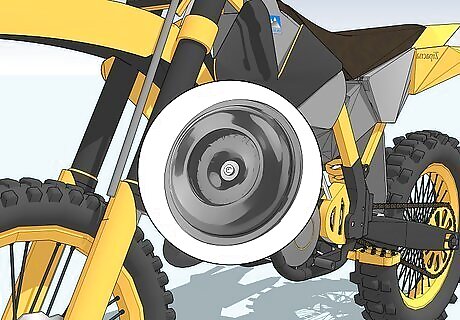
Horn The horn must be in good working condition and audible at 200 hundred feet. Check your state’s laws for specifics—some may allow you to use a non-electric horn, but others require a fully-electric horn connected to the dirt bike battery to pass inspection. If you can go non-electric, look for a USB rechargeable horn that requires no wiring.
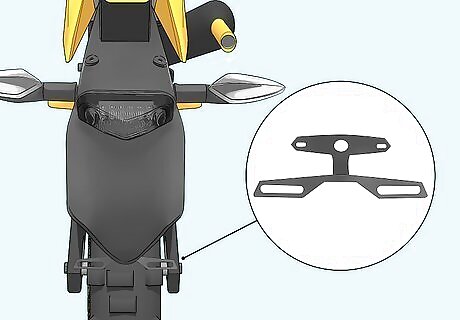
License plate bracket To kill several birds with one stone, look for a multi-purpose tail piece with a license plate holder, integrated tail light, and turn signals. This all-inclusive piece will illuminate the plate for you, but you can use an LED strip light if you go with a different setup (like an individual bracket). Some states have rules about license plate placement; be sure to double-check that.

Muffler Dirt bike exhaust pipes are loud and emissions aren’t controlled without a muffler, so you’ll need to get fitted for an EPA approved exhaust. A dirt bike won’t pass inspection or be considered street legal in most states until this modification has been made. Some states (like California) are particularly strict about emissions, so check your local laws carefully for specifics.
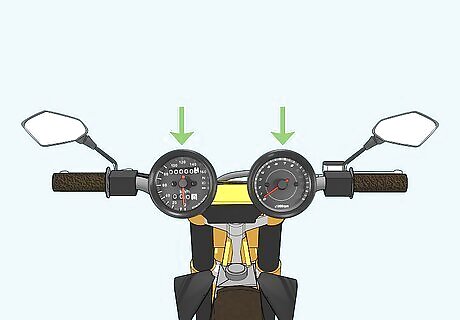
Odometer Many states don’t require this by law, but knowing your speed is really important so you can follow speed limits. Monitoring your RPM, mileage, engine temperature, and fuel consumption are also crucial for operating a dirt bike safely on public roads, so an odometer is a great investment. Aftermarket odometers are easy to find and a snap to install.
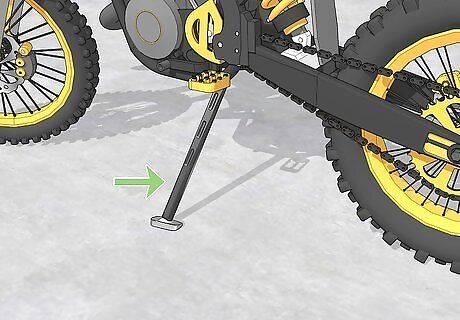
Kickstand Getting a kickstand is more of a practical issue rather than a requirement. Most dirt bikes don’t come with side stands because they aren’t necessary in off-road situations, but if you’re cruising public streets, you’ll probably be stopping or parking occasionally—and propping your bike up against a wall or building isn’t a great solution. In fact, it’s often illegal, so you could end up getting towed or fined.
DMV Approval
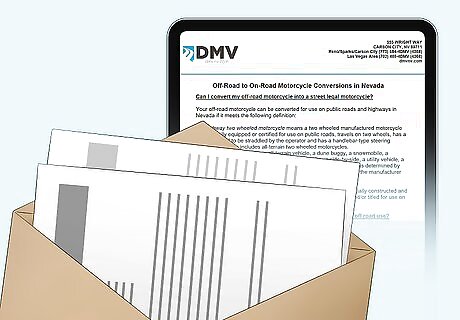
Contact your local DMV to find out exactly what paperwork to bring in. This process varies quite a bit from state to state, but registering your bike with the DMV is the crucial final step before your bike is officially street legal. Depending on where you live, you may need to prepare and bring the following paperwork with you to register your dirt bike: Manufacturer’s certificate of origin (MCO) Certification of equipment compliance Certified VIN inspection Statement of odometer Application for title and/or registration Valid driver's license with a motorcycle endorsement Proof of insurance Proof of ownership (bill of sale or OHV registration card)




















Comments
0 comment